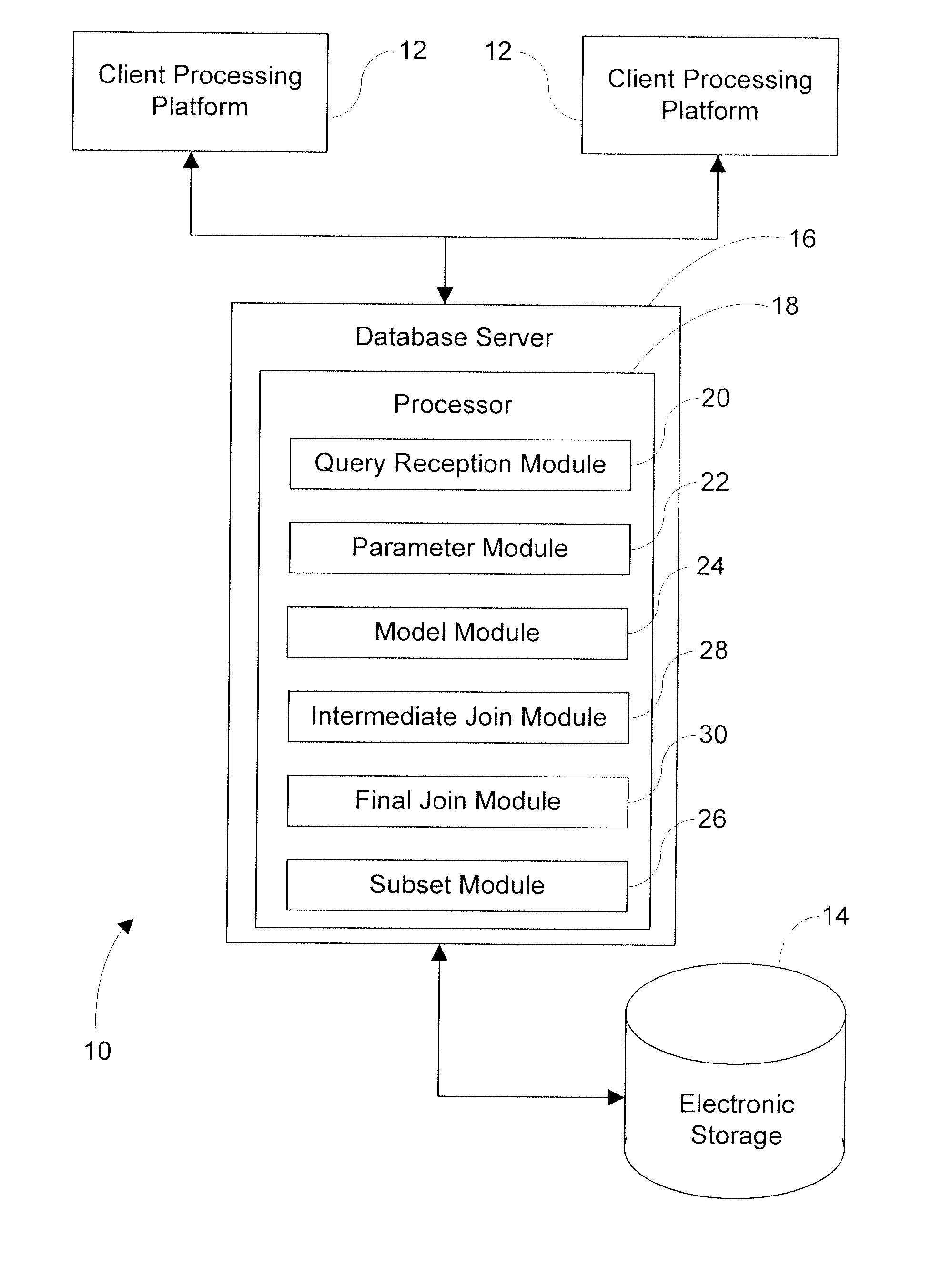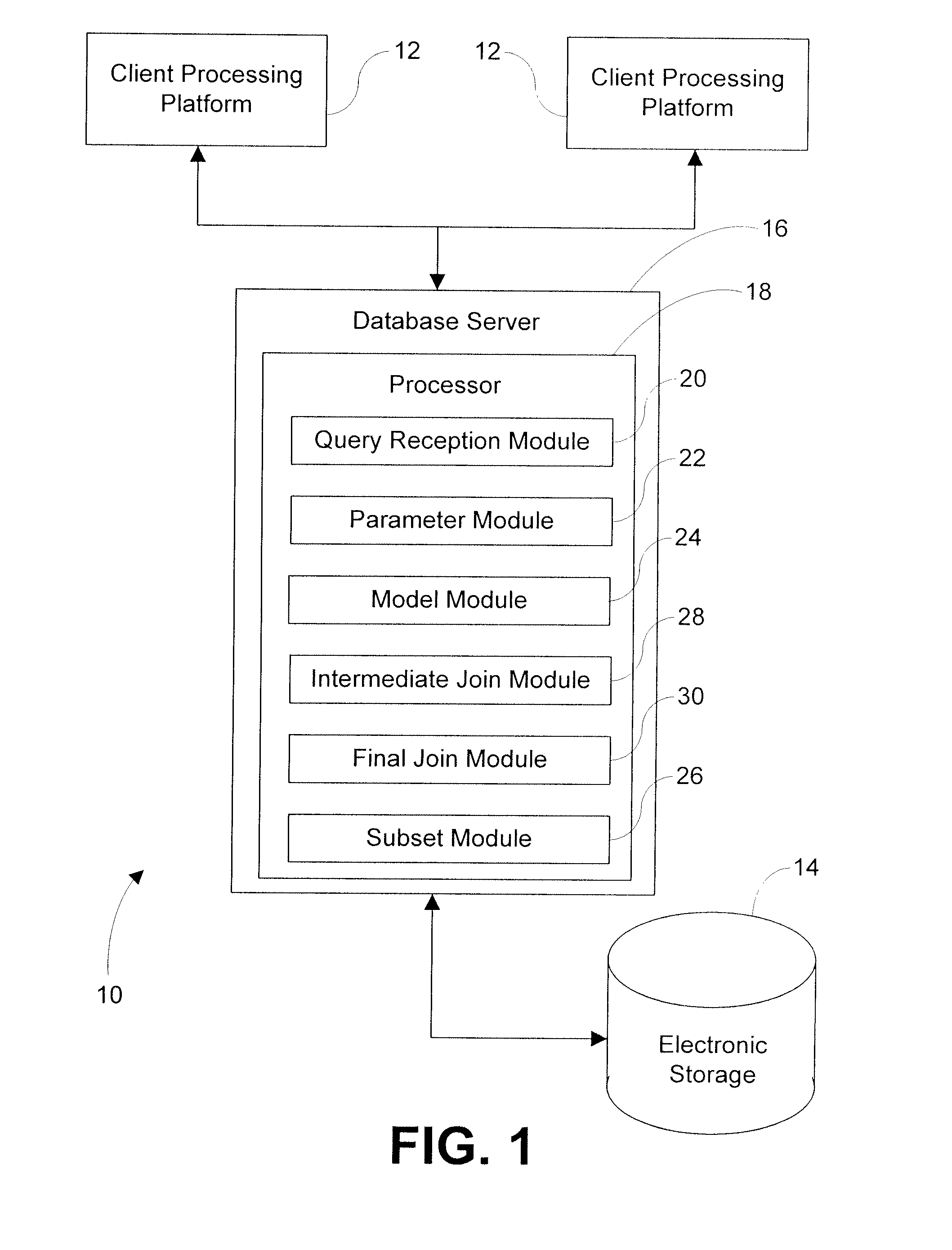System And Method For Processing Database Queries
a database and database technology, applied in the field of system and method for processing database queries, can solve the problems of inability to meet the requirements of database management system query optimization, and inability to meet the requirements of database query optimization, so as to enhance the processing of queries to the database and enhance the determination of join orders of tables implicated.
- Summary
- Abstract
- Description
- Claims
- Application Information
AI Technical Summary
Benefits of technology
Problems solved by technology
Method used
Image
Examples
Embodiment Construction
[0026]FIG. 1 illustrates a system 10 configured to process queries to a database. In particular, the system is configured to process queries to the database by determining execution plans for executing queries to the database. System 10 may be configured to determine optimized join orders of tables implicated in queries as part of determining execution plans for executing the queries. The optimized join orders can be determined for relatively large numbers of tables and / or the optimization results may be enhanced for joins with relatively large numbers of tables. The system may include one or more of one or more client processing platforms 12, electronic storage 14, a database server 16, and / or other components.
[0027]It should be appreciated that as used herein, the terms “optimize” and / or “optimizer” do not necessarily refer to the refinement of a query and / or join order to a “best” or “optimal” join order solution. Instead, the term is used consistent with its meaning in the field...
PUM
 Login to View More
Login to View More Abstract
Description
Claims
Application Information
 Login to View More
Login to View More - R&D
- Intellectual Property
- Life Sciences
- Materials
- Tech Scout
- Unparalleled Data Quality
- Higher Quality Content
- 60% Fewer Hallucinations
Browse by: Latest US Patents, China's latest patents, Technical Efficacy Thesaurus, Application Domain, Technology Topic, Popular Technical Reports.
© 2025 PatSnap. All rights reserved.Legal|Privacy policy|Modern Slavery Act Transparency Statement|Sitemap|About US| Contact US: help@patsnap.com



